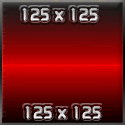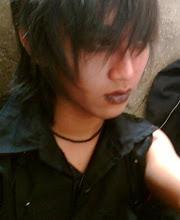
Japan is rich with different cultures of diverse ancestry. Although current technological developments in Japan continue to up date in a matter of per second, but the traditional side masuh kept preserved until today. Here is one of a variety of Japanese culture that is still ongoing to this day:
Matsuri (, Matsuri) is a Japanese word that means in terms of Shinto religious rituals dedicated to us, while according to the notion of secularism means festivals, celebrations or holiday celebrations.
Matsuri is held in many places in Japan and are generally held Jinja, or shrine, although there are also Matsuri Matsuri held church and that is not associated with religious institutions. In areas of Kyushu, Matsuri held in the autumn called Kunchi.
Most matsuri was held with the intention to pray for the success of the fish catch and harvest success (rice, wheat, peanuts, millet, maize), success in business, healing and immunity to diseases, safety from disaster, and as a thank you after successfully completing a Heavy duty. Matsuri is also held to celebrate the traditions associated with the change of seasons or the spirits of famous pray. Meaning of the ceremony performed and the time after the execution of diverse Matsuri with the objectives of the Matsuri. Matsuri which have the same goals and intentions can have different meanings depending on the ritual area.
On the implementation almost always be found Matsuri procession or cortege Mikoshi, Dashi (Danjiri) and Yatai all of which are the names of the vehicle or object containing We worship. Can also be found at Matsuri Chigo (small children in the procession), Miko (executor girls ritual), Tekomai (men dressed in women), Hayashi (typical music Matsuri), dancers, participants and spectators who dressed and well dressed, and markets shocked many different kinds of food and games.
History
Matsuri is derived from matsuru ( matsuru? Worship, worship) which means that the cult of Us or rituals associated with it. In the Shinto religion theology known as the four elements of Matsuri: purgatory (harai), offering, prayer readings (norito), and the dinner party. Matsuri is the oldest known in Japanese mythology is a ritual performed in front of the Amano Iwato.
Matsuri in the form of prayer readings remain as in the form of Kigansai (individual petition to Jinja, or shrine to pray and Jichinsai (ceremony prior to the establishment of a building or construction). Reading Shinto priest performed the prayers for individuals or groups of people in places that are not seen anyone else an early form of the Matsuri. At this time, the Ise Jingu shrine is one example of the Shinto religion that still hold Matsuri in the form of exclusive praying for a limited and general participants are not allowed to participate.
In accordance with the times, the objectives of the matsuri often strayed far from the true purpose of Matsuri. Organisation Matsuri often becomes the only goal dilangsungkannya Matsuri, whereas Matsuri only as discourse and without religious meaning.
The three largest Matsuri
* Gion Matsuri (Yasaka-Jinja, Kyoto, the month of July)
* Tenjinmatsuri (Temmangu Shrine Osaka, Osaka, July 24 to 25)
* Kanda Matsuri (Kanda Myojin, Tokyo, in May)
Matsuri is famous since the first
Tohoku Region
* Nebuta Matsuri (Aomori city, the month of August) and Neputa Matsuri (the city of Hirosaki, in August)
* Powerful warlord Takeda Shingen Matsuri (Akita city, the month of August)
* Sendai Tanabata Matsuri (the city of Sendai, the month of August)
Kanto Region
* Chichibuyo Matsuri (Chichibushi city, Saitama Prefecture, 2-3 December)
* Sanja Matsuri (Asakusa-Jinja, Tokyo, in May)
* Sanno Matsuri (Hie-Jinja, Tokyo, June)
Chubu Region
* Owarafu no bon (Toyama City, Toyama Prefecture, the month of September)
* Shikinenzoei Onbashira Daisai (Suwa City, Nagano Prefecture, held once every six years, last held in April-May, 2004).
* Takayama Matsuri (Takayama City, Gifu Prefecture, between April and October)
* Furukawa Matsuri (Hida city, Gifu Prefecture, in April)
Kinki Region
* Aoi Matsuri (Kyoto, May)
* Jidai Matsuri (Heian-Jingu, Kyoto, in October)
* Todaiji Nigatsudo Shuni-e otherwise known as Omizutori (Nigetsu-do, Todaiji Temple, Nara, March 12)
* Kishiwada Danjiri Matsuri (Kishiwada, Osaka Prefecture, 14 to 15 September)
* Nada no Kenka Matsuri and Banshu no Aki Matsuri (Hyogo Prefecture, held more than a hundred Jinja Banshu area with the bustle in the town of Himeji in the month of October)
* Nachi no Hi Matsuri (Nachi Katsuura, Wakayama Prefecture, the month of July)
* Aizen Matsuri, and Sumiyoshi Matsuri Tenjinmatsuri known as "The Three Biggest Summer Matsuri in Osaka" (Osaka Prefecture, in June-July)
Chugoku and Shikoku regions
* Saidaiji Eyo (Okayama, Okayama Prefecture, the month of February)
* Awa Odori (Tokushima, Tokushima Prefecture, 12 to 15 August)
Kyushu Region
* Hakata Gion Yamakasa (Fukuoka, Fukuoka Prefecture, the month of July)
* Nagasaki Kunchi (Nagasaki, Nagasaki Prefecture, 7 to 9 October)
* Karatsu Kunchi (Karatsu, Saga Prefecture, the month of November)
Other senses
In Japanese, the word "matsuri" also means the festival and the kanji for Matsuri ( Matsuri?) Can be read as the sai, so that the known terms like Eiga-sai (film festival), Sangyo-sai (festival of the harvest), Ongaku- sai (festival music) and the Daigaku-sai (festival organized by university).
Shimin Matsuri Matsuri is held the title for local governments or citizen groups with the intention to revive the regional economy and is generally not associated with religious institutions.
Matsuri Festival and other
* Sapporo Snow Festival (Sapporo, Hokkaido Prefecture, the month of February)
* Iwate Snow Festival (Koiwai Farm, Shizukuishi, Iwate Prefecture, the month of February)
* Yosakoi Soran Matsuri (Sapporo, Hokkaido, the month of June)
* Odori Niigata Matsuri (Niigata, Niigata Prefecture, mid-September)
* Godai Matsuri Hojo Odawara (Odawara City, Kanagawa Prefecture)
* Yosakoi Matsuri (the city of Kochi, Kochi Prefecture, August 9 to 12)
* Hakata dontaku (3 to 4 April, the city of Fukuoka)
* Hamamatsu Matsuri (3-5 May, the city of Hamamatsu, Shizuoka Prefecture)
* Wasshoi Hyakuman Natsu Matsuri (Kita Kyushu, Fukuoka Prefecture, on Saturday the first week of August)








0 Response to "MATSURI (JAPAN FESTIVAL)"